iPhone 15 Pro vs Samsung Galaxy Z Flip 5: to flip or not to flip?
We may earn a commission if you make a purchase from the links on this page.

Intro
If you are looking for a compact yet powerful phone, the Samsung Galaxy Z Flip 5 might just fit the bill. It's a clamshell flip phone, so it gets incredibly compact when closed, it's not too expensive, and it is also the first flip phone to run on the latest Snapdragon 8 Gen 2 chip.
But then on the other hand, you have the Apple iPhone 15 Pro. It is not a flip phone, but it is also very compact and now weighs less than previous editions.
It brings next-level performance thanks to the world's first 3nm chip, the A17 Bionic. Add improvements to the camera system, expectations for improved battery life, the iOS ecosystem of devices, and a few nice additions such as a USB-C port and a new Action Button, and you might have enough reason to stick with the traditional form factor.
So which one should you go for? Let's find out.
iPhone 15 Pro vs Samsung Galaxy Z Flip 5 differences:
- iPhone has traditional form factor, Galaxy is a flip phone
- iPhone has more powerful chip
- iPhone starts at 128GB base storage, Galaxy has 256GB
- Both have 8GB RAM
- iPhone has more capable camera system
- Galaxy does not have zoom camera
- iPhone has longer battery life
- Similar charging speeds
Table of Contents:
Read more:
- iPhone 15 Pro vs Samsung Galaxy S23
- iPhone 15 Pro Max vs Samsung Galaxy S23 Ultra
- iPhone 15 series: everything you need to know
- Samsung Galaxy Z Fold 6 vs iPhone 15 Pro Max: expectations
Design and Size
A flip phone or a compact traditional phone?
The difference in design between these two is really obvious: one is a clamshell flip phone that closes in a neat, miniature package, while the iPhone is a standard, relatively compact phone.
As obvious as it may be: this is the crucial difference between these two. Yes, the Galaxy has a larger cover screen, but you still need to open it very often and doing this dozens if not hundreds of times a day can quickly turn from something cute into a real chore. Plus, you need to use both hands to unfold the phone, which adds a bit of complexity when you are busy doing something.
In that regard, the iPhone might not be as innovative, but for some people it may be the more practical form factor.
In terms of durability, we have no huge concerns about the folding mechanism and the hinge on the upcoming Galaxy Flip 5, as Samsung has already made four generations of the series, so it definitely has improved the technology and you have water protection too. Do remember, though, that you need to be extra careful around dust as it can potentially cause some damage to a folding phone.
Display Differences
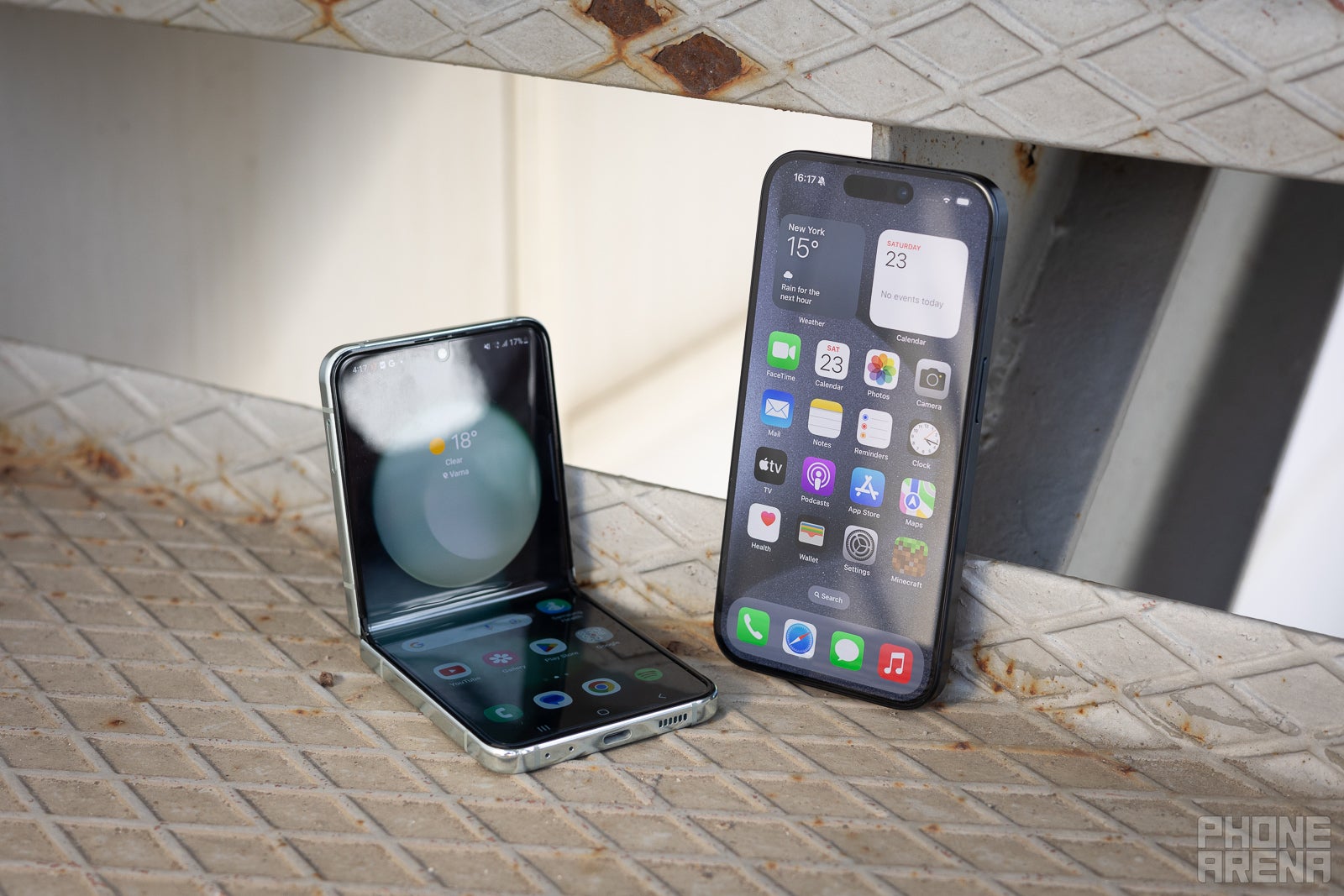
(Image Credit - PhoneArena)
The iPhone 15 Pro has a 6.1-inch screen, while the Galaxy Flip 5 uses a nearly all-screen front and it unfolds to a main screen with a 6.7-inch size and a taller-than-usual 22 by 9 aspect ratio.
Also, do remember you have a screen protector pre-applied on the Galaxy that you should not remove under any circumstances.
Both phones use OLED screens, and we will have scientific display measurements in just about a week or so, telling you all about the color quality.
For biometrics, the iPhone 15 Pro relies on the familiar Face ID system, while the Galaxy uses a fingerprint scanner built inside the power button on the side. Both do a fine job and it's a matter of personal preference which one you like better.
Performance and Software
Apple A17 vs Snapdragon 8 Gen 2
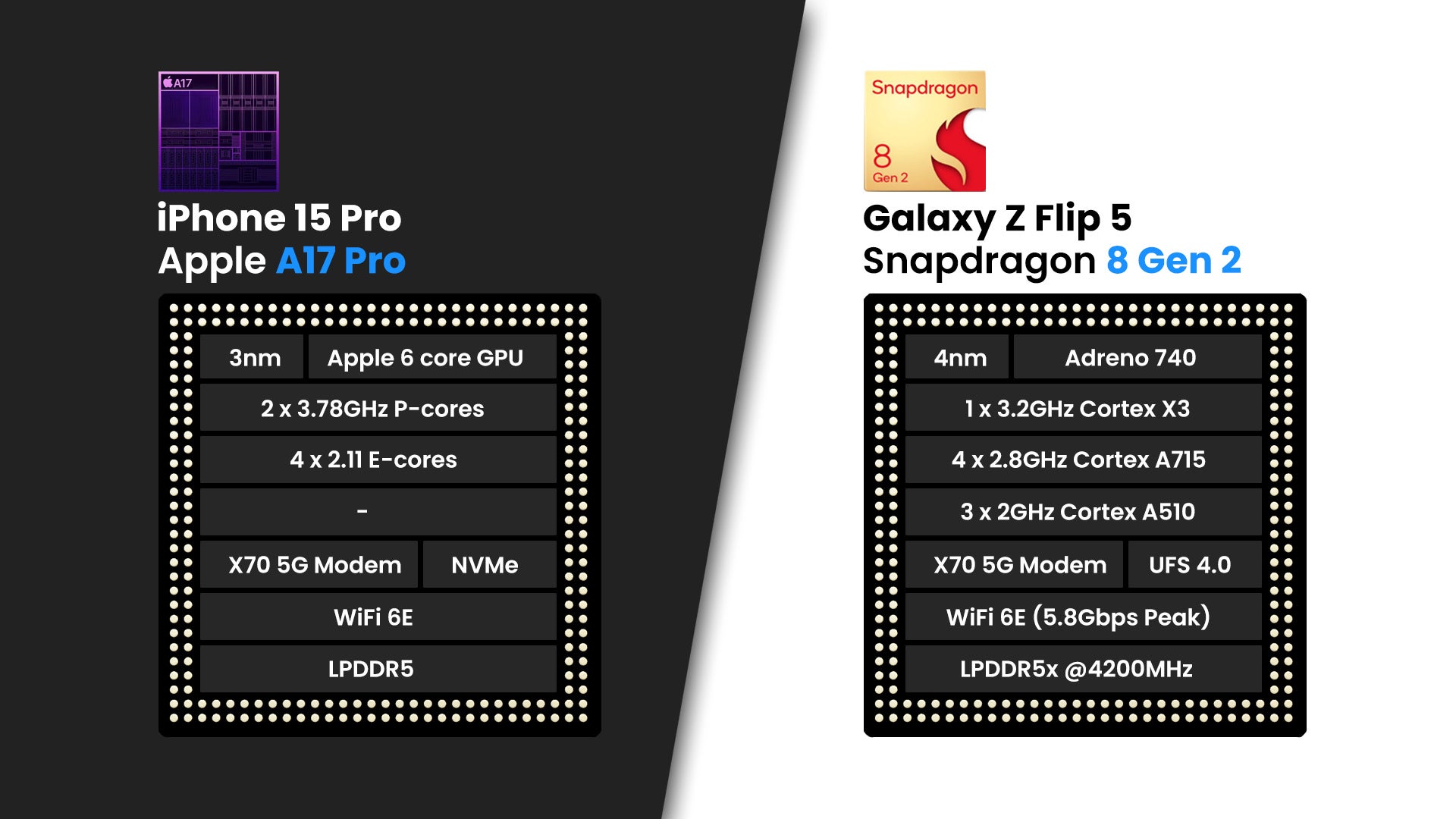
Under the hood, the iPhone 15 Pro gets the new Apple A17 Bionic chip, which is the world's first mobile chip built on the cutting-edge 3nm technology. This is big deal as it delivers a meaningful bump in performance speeds, but most importantly in power efficiency too.
The Galaxy, on the other hand, runs on Qualcomm's latest and most powerful Snapdragon 8 Gen 2, one of the most capable processors Qualcomm has ever made. However, that one is built on 4nm tech and it falls slightly behind the performance power of the Apple chip.
The iPhone also has 8GB of RAM, same as the Galaxy, but the Galaxy has 256GB of storage in the base model, double what you get on the base iPhone.
Finally, there is the difference in software: iOS versus Android.
We don't plan to get into that, but you probably already know which one you prefer. The main advantages of iOS are the ecosystem in general with cross-device features like AirDrop and support for the various popular Apple gadgets like Apple Watches and AirPods.
Android, on the other hand, has advantages like more customization options, split-screen multitasking and a few other tricks.
When it comes to the software updates, the iPhone is guaranteed to get at least 5 years of system updates, while Samsung promises 4 years of updates on its Galaxy phones.
As for the iPhone 15 Pro software, it runs on latest iOS 17. This new version brings noticeable improvements to the Phone, Messages and FaceTime apps, as well as few smaller but welcome tweaks like better autocorrect (finally!).
The changes to the iPhone Phone app will probably be most noticeable as you can now now set a Contact Poster for yourself which will be displayed full-screen on other iPhones when they get a call from you. NameDrop is another new iOS exclusive trick where you just bring your iPhone close to another one to exchange contacts. And in the messages app, you have new stickers and live stickers which you can create from your Live Photos, to say turn your pet into a sticker.
iPhones also get a new Standby Mode where your phone will act like a mini home hub displaying useful information while it’s charging. Other new iOS 17 features include interactive widgets, mood tracking in the Health app, as well as a brand new journaling app.
The changes to the iPhone Phone app will probably be most noticeable as you can now now set a Contact Poster for yourself which will be displayed full-screen on other iPhones when they get a call from you. NameDrop is another new iOS exclusive trick where you just bring your iPhone close to another one to exchange contacts. And in the messages app, you have new stickers and live stickers which you can create from your Live Photos, to say turn your pet into a sticker.
Camera
The iPhone has a zoom camera
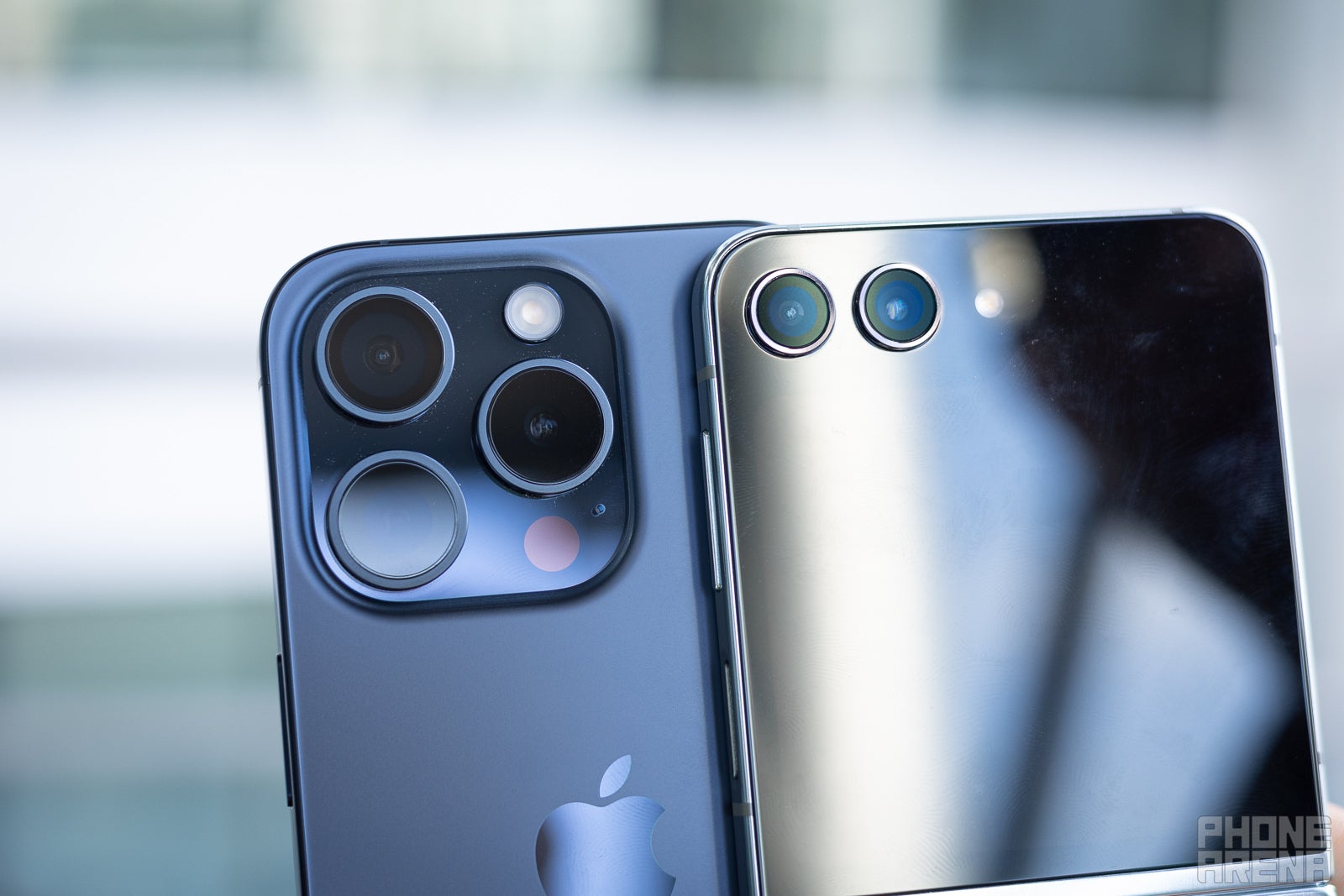
(Image Credit - PhoneArena)
With a dual camera system on the Galaxy and triple cameras on the iPhone, it's clear that the iPhone has at least one advantage.
The missing camera on the Galaxy is a zoom one, and that is its biggest weakness. The iPhone, on the other hand, not only has a native 3X zoom lens, but it also uses sensor cropping to give you lossless quality images at 1.2X (28mm), 1.5X (35mm) and 2X (48mm). This is like having three new lenses, really cool!
But even at 1X, the iPhone now defaults to 24MP shots, which have a lot more detail than the 12MP pictures from the Galaxy.
We will be showing you side by side image comparisons next week, but we know that Samsung goes with exaggerated colors, while the iPhone uses less crazy tonalities, but both still have that typical smartphone look.
The Galaxy also supports some cool tricks like 8K video, which you don't get on the iPhone 15 Pro.
Audio Quality and Haptics
Both phones come with a dual speaker system with a main, bottom-firing speaker and then a secondary one in the earpiece, but for the actual quality comparison of the loudspeakers we have to test them next week and we will be updating this section.
As for haptics, we think that Samsung has some catching up to do with the nice and tight feedback that comes with Apple's Taptic Engine, which feels more precise and more refined overall.
Battery Life and Charging
Can a Flip phone match a regular phone for battery life?
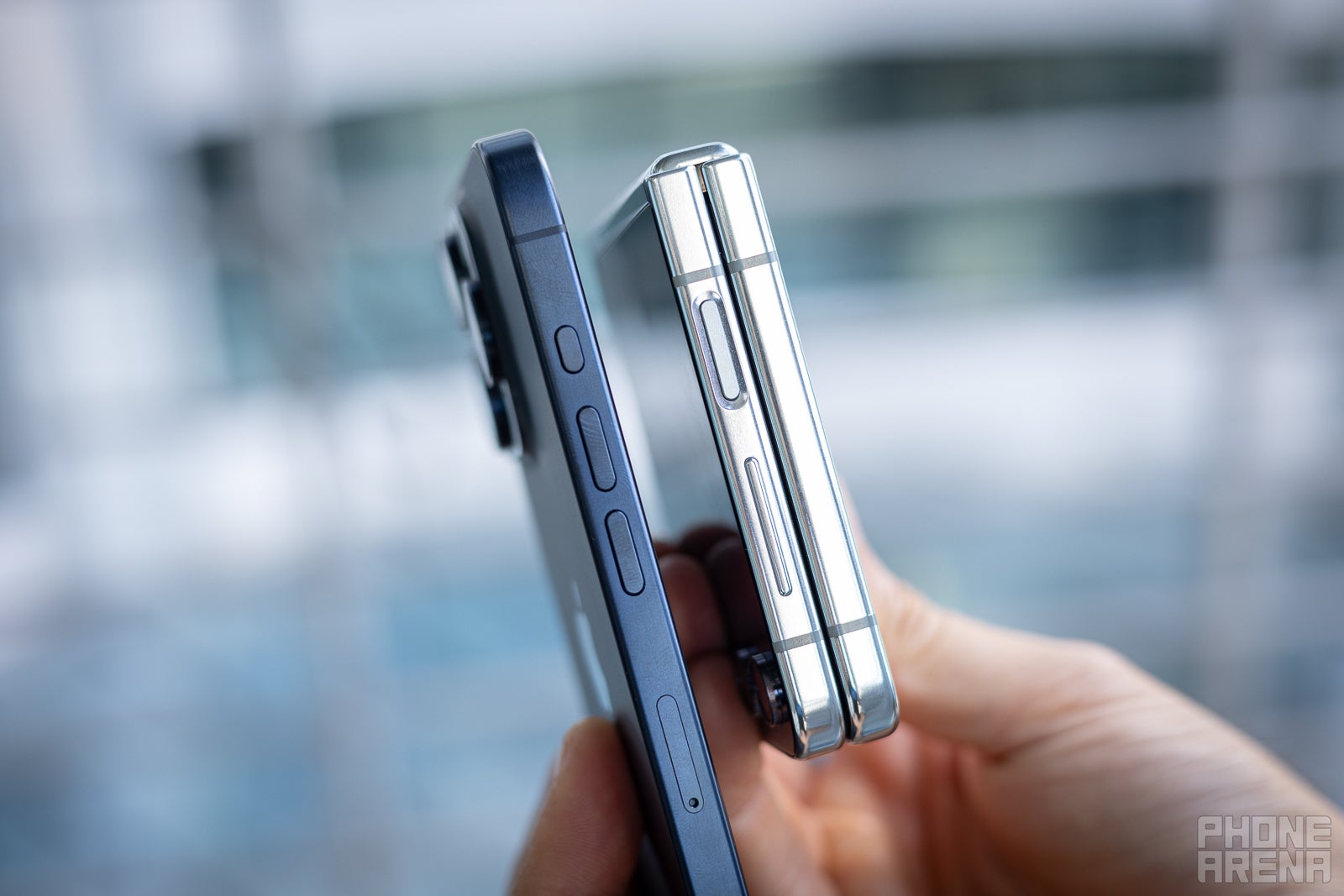
(Image Credit - PhoneArena)
The iPhone 15 Pro sports a 3,274 mAh battery, a smaller number than the Galaxy Z Flip 5 which has a 3,700 mAh battery size.
So... the Flip 5 should have longer battery life too?! Well, don't think that just because of the bigger battery size. In reality, the iOS ecosystem seems better optimized for power efficiency, the iPhone actually outlasts the Galaxy. But those being compact phones, be warned you still need to recharge every night.
The big news for the iPhone is that it finally comes with a USB-C port for charging, the same as on most other tech gadgets around. This is awesome news!
Unfortunately, charging speeds on the iPhone remain sluggish at around 23W and it is even slower than the unimpressive 25W charging on the Galaxy Z Flip 5.
Both support wireless charging at 10W speeds on the Galaxy, while the iPhone has slightly zippier 15W MagSafe.
Specs Comparison
Here are the expected specs of the iPhone 15 Pro and the Galaxy Z Flip 5:
| iPhone 15 Pro | Galaxy Z Flip 5 | |
|---|---|---|
| Size, weight | 140.6 x 70.6 x 8.25 mm 188 grams | Unfolded: 165.1 x 71.9 x 6.9 mm Folded: 85.1 x 71.9 x 15.1 mm 187 grams |
| Screen | 6.1" OLED 19.5:9 aspect 120Hz ProMotion | 6.7" OLED 22:9 aspect 60Hz |
| Processor | A17 Bionic 3nm | Snapdragon 8 Gen 2 4nm |
| RAM, Storage | 8/128GB 8/256GB 8/512GB 8/1TB LPDDR5 | 8/256GB 8/512GB - LPDDR5 |
| Cameras | 48MP main 12MP ultra 12MP 3X zoom 12MP front | 12MP main 12MP ultra - 12MP front |
| Battery | 3274 mAh | 3700 mAh |
| Charging | USB-C 23W wired 15W MagSafe | USB-C 25W wired 15W wireless |
Take a look at our more detailed break down of the iPhone 15 Pro vs Samsung Galaxy Z Flip 5 specs here.
Summary and Final Verdict
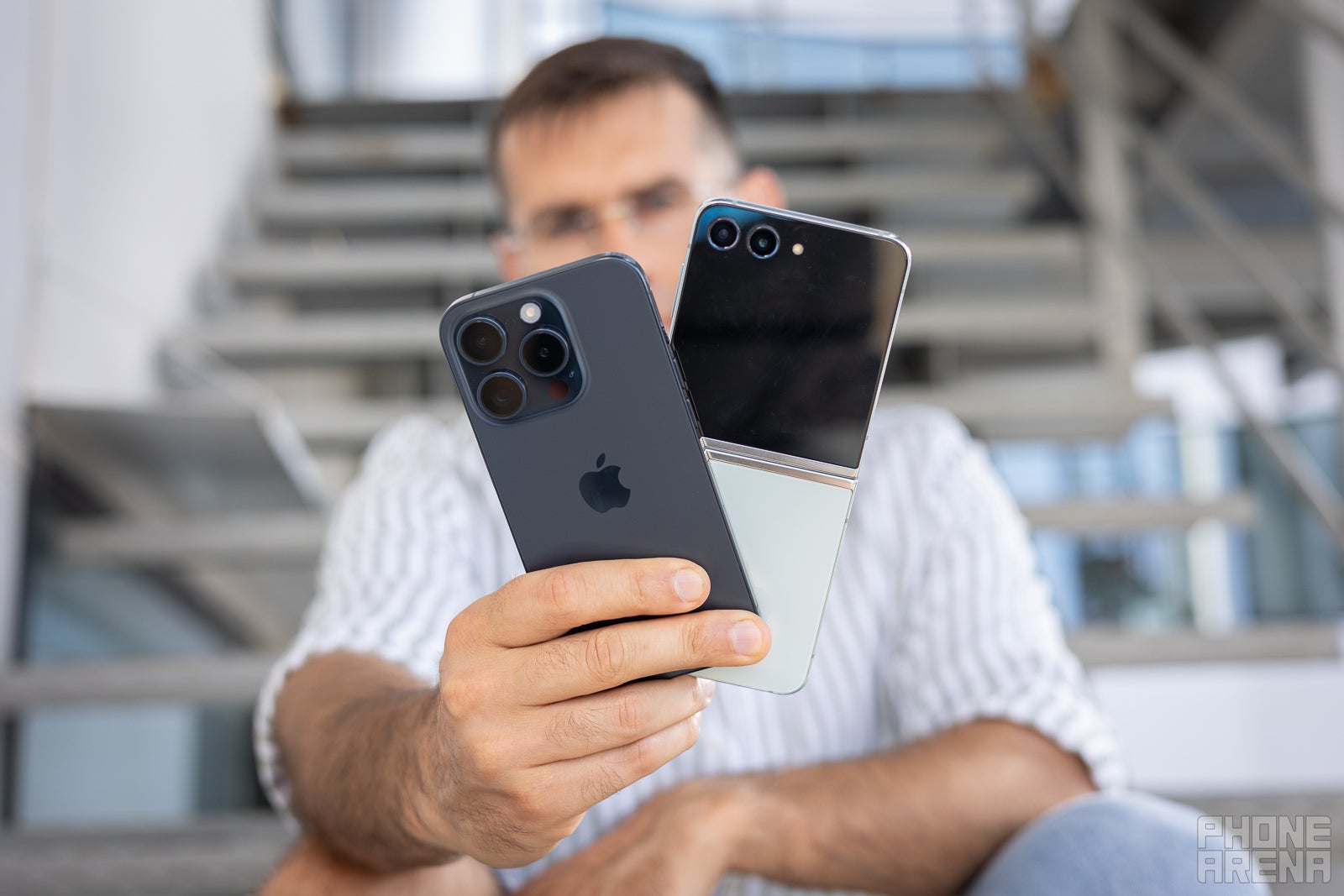
(Image Credit - PhoneArena)
So... which one should you go for? The cute and compact Galaxy Z Flip 5, or the more traditional iPhone 15 Pro?
The Flip 5 - we'd argue - doubles as a bit of a fashion statement, which some will appreciate, and it gets a welcome refresh with a front screen that you can actually use for many tasks. This is huge as you don't have to unfold it for every little thing.
The iPhone 15 Pro, however, seems like the better fit for those who want a traditional phone that can take more of a beating. And also, frankly, for those who like the Apple ecosystem with the Apple Watch, AirPods, MacBook, and all the rest. In terms of features, the zoom camera and superb video recording on the iPhone also really stand out. The longer software updates also give the iPhone a slight edge.
But which one would YOU go for and... why?

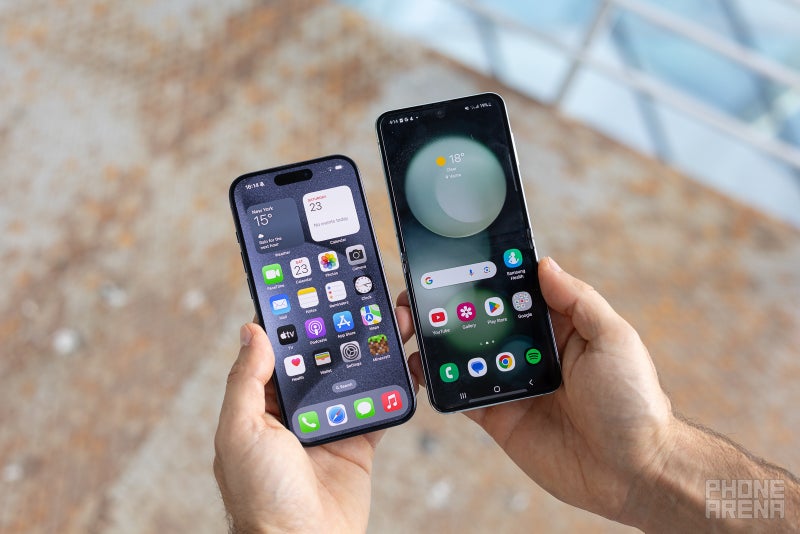
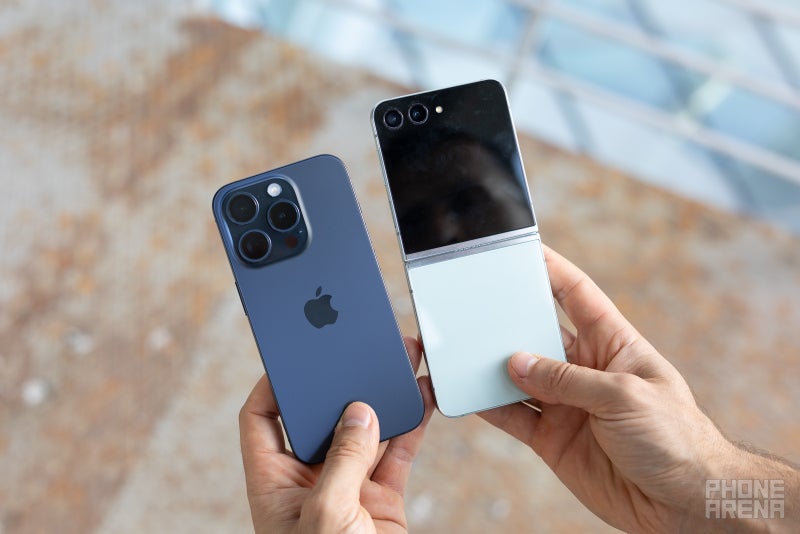






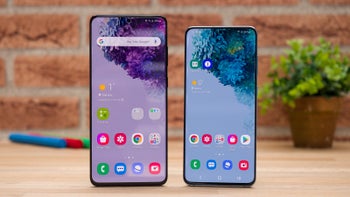


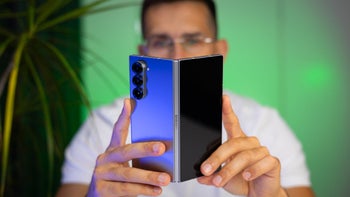









Things that are NOT allowed: